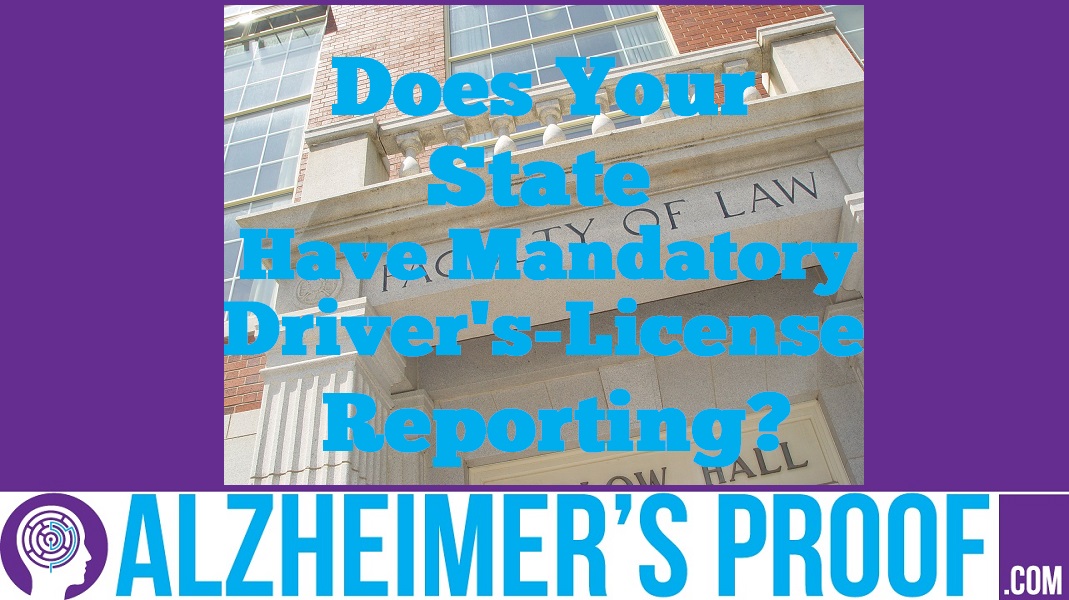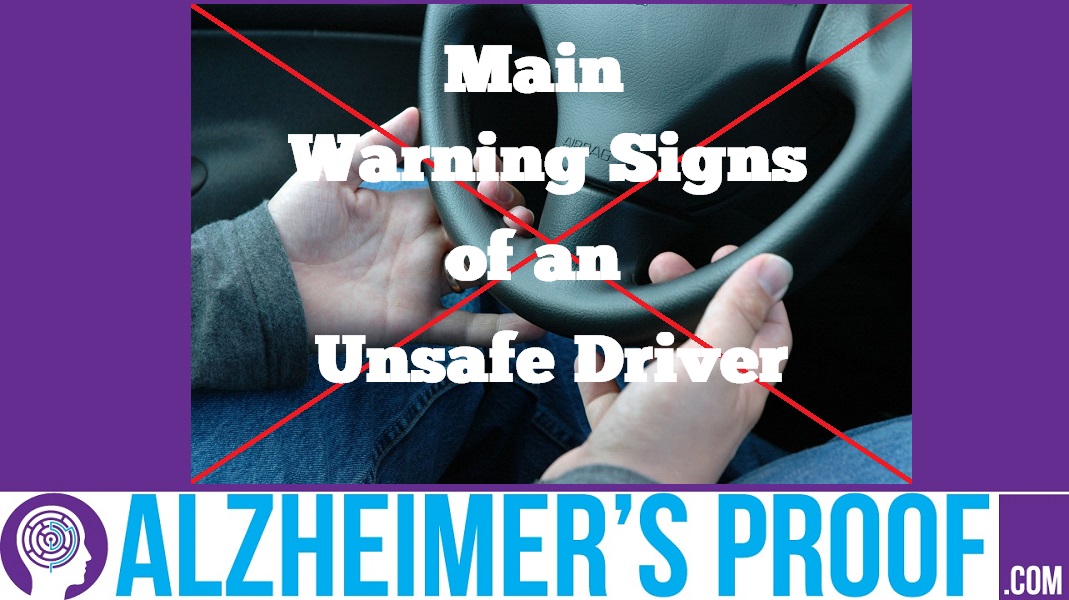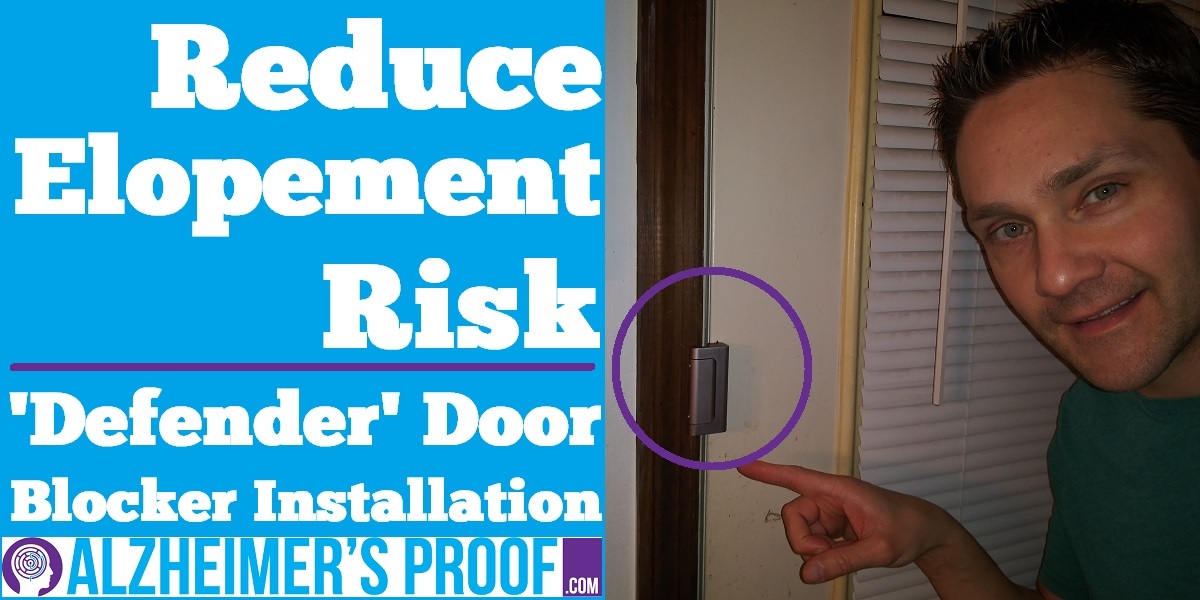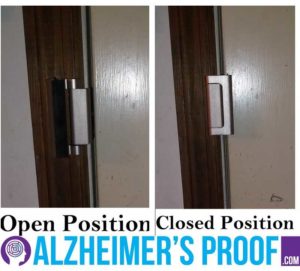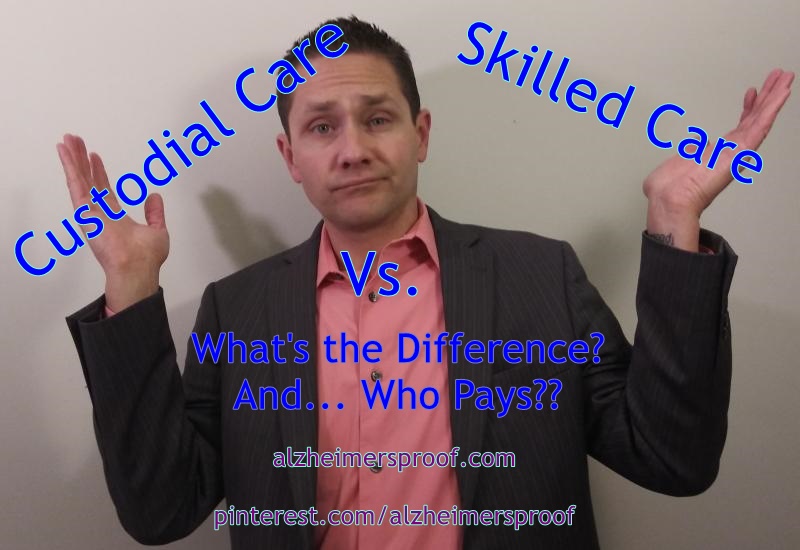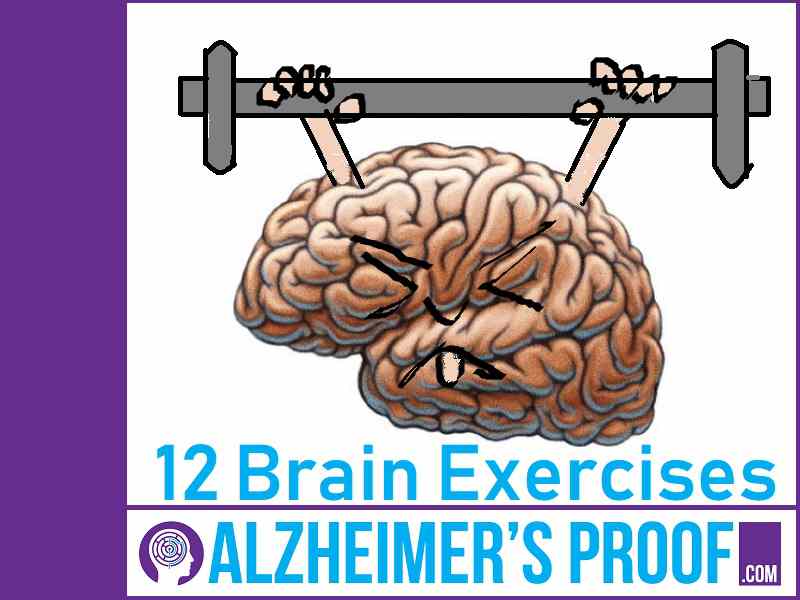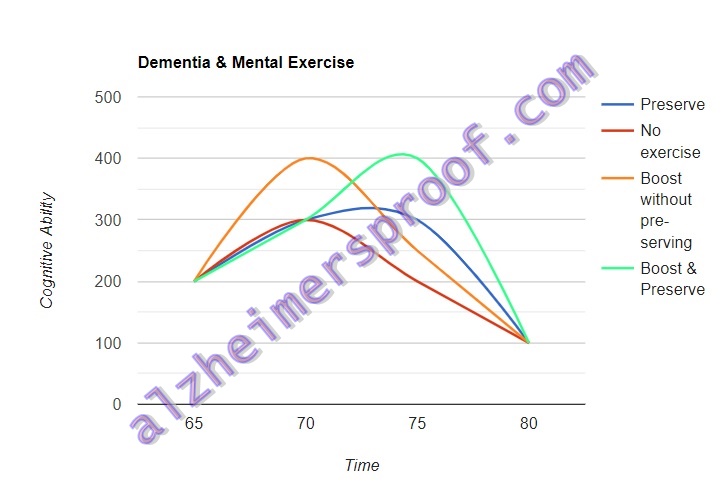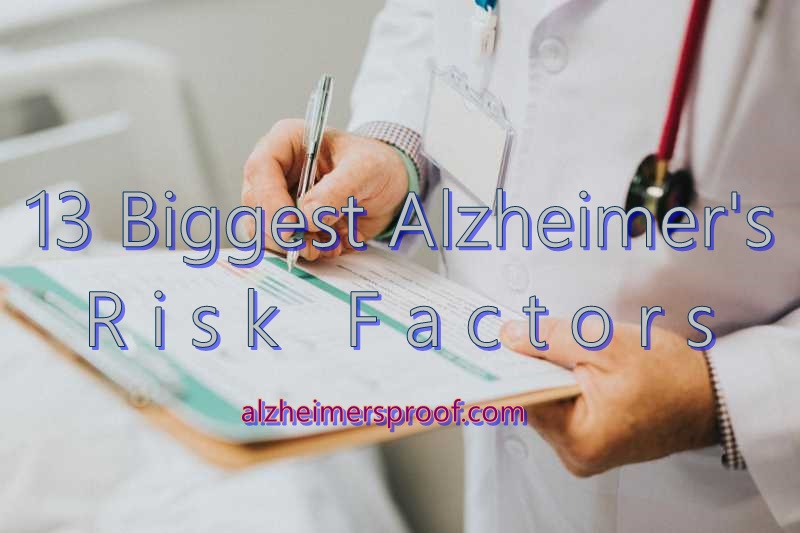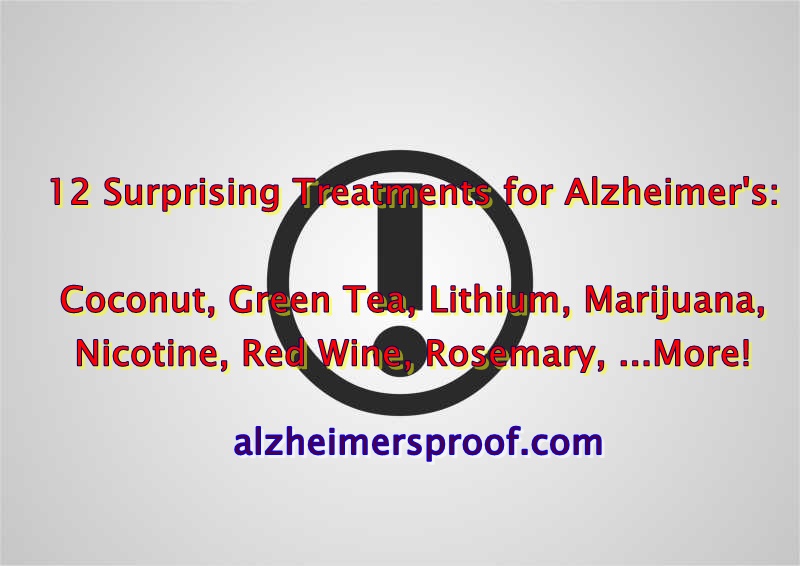Alzheimer’s is a neurodegenerative brain disease that, from the standpoint of symptoms, is characterized by the diminution of memory and reason. Usually it afflicts the elderly. (But there is also “early onset” Alzheimer’s that has impacted the lives of younger people.) Indeed, it used to be referred to as “Senile Dementia.”[1] For the time being, the exact cause of Alzheimer’s remains elusive. However, there are several physical / physiological signs that may point the way towards the articulation of a definitive statement about the condition’s cause(s) or etiology.
Many of these possible causes revolve around various observed defects (such as “beta-amyloid plaques” and “neurofibrillary tangles”) that present themselves in certain brain regions (e.g., hippocampus and cerebral cortex) of an Alzheimer’s-affected brain. Others have to do with detectable deficiencies (e.g., in neurotransmitters like acetylcholine, or in vitamins) or with the discovery of foreign substances (like bacteria and heavy metals) that deposit themselves in the brain.
For more information, read on.
Disclaimer
As I have stated elsewhere, I am not a doctor or medical professional of any kind. This article is based upon my own research. Where possible, I have quoted researchers who have far more expertise than I have. Nevertheless, readers should bear in mind that these possible cases have a hypothetical, speculative, or otherwise tentative quality. The precise cause (or causes) of Alzheimer’s is presently unknown. (See the bottom of the article for some additional provisos.)
Top Ten (10) Candidate Causes for Alzheimer’s
1. Acetylcholine Deficiency
Biochemically, acetylcholine (C7H16NO2) is produced by the body from the essential substance choline, which we may get from eggs, legumes, and soy. Functionally, acetylcholine is a neurotransmitter that helps our nervous system send impulses amongst neurons and between nerve and muscle cells.
For all the questions surrounding this disease, one thing researchers are fairly confident in is that “acetylcholine levels are abnormally low in people with Alzheimer’s”.[2]
It is by no means clear that the decrease in acetylcholine levels causes Alzheimer’s. It is perfectly compatible with the evidence that some other thing(s) causes both Alzheimer’s and the observed decrease in “cholinergic” (that is, acetylcholine-related neural) activity.
However, because of the correlation, numerous pharmaceutical and herbal interventions revolve around two, interrelated, strategies.
What can you do to increase acetylcholine levels?
Number one, doctors may try to increase the bioavailable levels of the relevant neurotransmitter. Straightforwardly, this is done by supplementing with acetylcholine or its precursor, choline.
And, number two, physicians may also try to stop the body from further breaking down the acetylcholine that it has. This is usually accomplished by trying to hinder, or inhibit, the action of the acetylcholine-dissolving enzyme cholinesterase.
Thus, there is a class of drugs called, appropriately enough, “cholinesterase inhibitors.” This class includes (or at one time included) such drugs as: Aricept (Donepezil), Cognex[3] (Tacrine), Exelon (Rivastigmine), and Razadyne (GalantamineListen). For more on these pharmaceuticals, see HERE.
Various herbs – such as Calamus (Acorus calamus), Clubmoss (Huperzia serrata), Cubeb (Piper cubeba), Gingko (Gingko biloba), Ginseng, Chinese (Panax ginseng), Juniper (Juniperus spp.) – may also display cholinesterase inhibiting properties. For much more on these (and other) herbs, see HERE.
2. Homocysteine Levels High
Whereas acetylcholine levels are generally low in Alzheimer’s patients, the levels of other substances are found to be quite high.
For instance, various investigations suggest that “people with Alzheimer’s and other forms of dementia have higher levels of homocysteine in the blood than other people…”.[4] In fact, “[o]ne …study found that elderly people with high levels of …homocysteine have nearly twice the risk of developing the disease.”
Homocysteine is an amino acid. It’s presence is bound up with the biological processes whereby the body breaks down methionine (for more on which, see HERE) and the chemically related amino acid cysteine.
What can you do to decrease homocysteine levels?
It turns out that one of the most effective ways to lower homocysteine levels is to ensure that you have adequate amounts of the Vitamin-B Complex. Vitamins B-6 (Pyridoxine), B-9 (Folic Acid), and B-12 (Cobalamin) lower homocysteine levels.
Thus, out-of-control homocysteine levels could itself be caused by Vitamin-B deficiency. (See further.)
3. Infection
This one may be a real shocker. And it comes in several variations.
One article in the magazine New Scientist had the stupefying title “Gum disease may be the cause of Alzheimer’s…”.[5] What?!
Here’s the deal. Several groups of researchers have discovered a particular bacterium, Porphyromonas gingivalis, in Alzheimer’s-affected brain regions.[6] This same bacterium is a common culprit in various gum inflammations (gingivitis) and gum infections (periodontitis).
It’s not clear how – or precisely when – the bacterium gets into the brain. It could be that poor dental hygiene enables bacteria to enter the bloodstream of otherwise healthy individuals and, ultimately, attack their brains. So, it could be a cause for Alzheimer’s.
On the other hand, it may only be “opportunistic”; the bacteria might simply take advantage of the fact that the brain of an Alzheimer’s patient is somehow more open to infection. This explanation might even be preferred since it seems plausible that dementia sufferers let their dental care slide.
Time – and additional research – may tell.
Another possible route for infection-to-Alzheimer’s comes from the Chlamydia pneumoniae bacterium. Unlike its sexually transmitted cousin, Chlamydia trachomatis, the former causes respiratory problems – including pneumonia.
In an autopsy-based study of around 30 brains – 15 with Alzheimer’s at death and 15 without – “[a]ll but one of the brains from Alzheimer’s patients were positive for C. pneumoniae; only one of the control brains was.”[7]
What can you do to counteract infections?
Firstly, you can try to ensure that you maintain good hygiene – both for yourself and your loved one. In terms of dental hygiene, this means brushing teeth after meals and flossing at least once per day. In general terms, it means observing good disease-mitigation practices around sick people. This involves washing hands correctly, covering mouths and noses when coughing/sneezing, properly discarding soiled tissues, not using “communal” towels, and disinfecting surfaces and dishes prior to use.
But, secondly, you should also ensure that your or your loved one’s diet and nutrition are optimal. This may include the observance of the so-called Alzheimer’s-friendly “MIND Diet,” about which you can read more HERE.
Thirdly, it is probably appropriate to seek advice or care from a competent medical professional. If the person is a modern medical practitioner, then he or she may prescribe one or more pharmaceutical antibiotics to address infections. These include: Amoxicillin, Azithromycin, Cephalexin, Ciprofolxacin, Clarithromycin, Doxycycline, Erythromycin, Penicillin, various Sulfonamides, and Tetracycline.
If the person is a naturopath or traditional healer, then he or she might recommend certain herbs – such as Bee Balm, Scarlet (Monarda didyma), Cat’s Claw (Uncaria tomentosa), Clove (Syzygium aromaticum), Echinacea (Echinacea purpurea), Garlic (Allium sativum), Ginger (Zingiber officinale), Goldenseal (Hydrastis canadensis), Oregano (Origanum vulgare), Sage (Salvia officinalis), Tea Tree (Melaleuca alternifolia), Thyme (Thymus vulgaris), Turmeric (Curcuma longa), and Uva Ursi[8] (Arctostaphylos uva-ursi) – and other substances – e.g., Honey – that have reputations as bacteria-fighters.
4. Inflammation
We just mentioned gum inflammation. But inflammation can occur all over the body – including in the brain directly.
As it happens, “[i]nflammation in Alzheimer’s disease (AD) patients is characterized by increased cytokines and activated microglia.”[9] In fact: “Epidemiological studies suggest reduced AD risk is associated with long-term use of nonsteroidal anti-inflammatory drugs (NSAIDs).”
These include over-the-counter offerings such as Aspirin (Bayer, Bufferin), Ibuprofen (Advil, Motrin), and Naproxen (Aleve, Naprosyn) and prescription-only drugs like Celebrex (Celecoxib), Feldene (Piroxicam), and Mobic (Meloxicam).
However, there may be other reasons why long-term NSAID use is not encouraged. For example, NSAIDS can cause damage to sensitive gut tissues and lead to ulcers.
What can you do about inflammation?
Thus, a person might wish to turn to alternatives, such as anti-inflammatory herbals. These include the following.
Basil (Ocimum basilicum), Black Pepper (Piper nigrum), Cardamom (Elettaria cardamomum), Cayenne Pepper (Capsicum annuum “acuminatum”), Cinnamon (Cinnamomum verum), Clove (Syzygium aromaticum), Frankincense, Indian (Boswellia serrata), Garlic (Allium sativum), Ginger (Zingiber officinale), Meadowsweet (Filipendula ulmaria), Nutmeg (Myristica fragrans), Rosemary (Rosmarinus officinalis), Sage (Salvia officinalis), Thyme (Thymus vulgaris), Turmeric (Curcuma longa), and White Willow (Salix alba).
You should also be aware that there are other supplements that can have an anti-inflammatory effect, such as Alpha Lipoic Acid (ALA), Bromelain – derived from the Pineapple (Ananas comosus) – Coenzyme Q10 (CoQ10), Fish Oil (Omega-3 Fatty Acids), Glutathione (C10H17N3O6S), Magnesium (Mg), Resveratrol (C14H12O3) – derived from Red Wine, Spirulina (Arthrospira platensis and Arthrospira maxima), and Vitamins A (Retinol), B-6 (Pyridoxine), C (Ascorbic Acid), D (Ergocalciferol), E (Alpha-Tocopherol), K (Phytonadione).
Additionally, your general diet can allay inflammation. Focus on green, leafy and cruciferous vegetables such as Bok Choy (Brassica chinensis), Broccoli (Brassica italica), Brussels Sprouts (Brassica gemmifera), Cabbage (Brassica capitata), Cauliflower (Brassica botrytis), Chard (Beta vulgaris), Garden Cress (Lepidium sativum), Kale (Brassica sabellica), Spinach (Spinacia oleracea), Watercress (Nasturtium officinale). Other veggies can do you well also, including Tomato (Solanum lycopersicum). Don’t forget your berries – Blackberry (Rubus fruticosus), Blueberry (Vaccinium corymbosum), Raspberry (Rubus occidentalis), and Strawberry (Fragaria × ananassa). Additionally, you’ll want to add Olive Oil (Olea europaea) and Green Tea (Camellia sinensis). And, if you’re adventurous, you might spring for some mushrooms, including Maitake (Grifola frondosa) and Reishi (Ganoderma lucidum).
For more on dietary considerations for Alzheimer’s, see my article on the “MIND Diet,” HERE.
But the main point is that their seeming positive effect on Alzheimer’s risk suggests that inflammation is a major factor in the onset of dementia.
5. Metal Poisoning (Aluminum, Copper, Lead, Mercury)
Let’s take these one at a time.
Aluminum
We’re continually exposed to this light metal. (For a more in-depth look at the sources of exposure to this metal, see my articles HERE and HERE.) And although it’s role in the development of various dementias is not entirely clear. Our sketchy knowledge is enough to raise concerns.[10]
For example, “[a]luminum seems to accumulate in the brain with age, and high levels of aluminum are found in the brains of victims of Alzheimer’s Disease.” The author then makes the obvious follow-up point that it is presently unknown whether the aluminum build up “is a cause or an effect of the disease”.[11]
Copper
Copper is a complicated metal to discuss because theorists are sharply divided over its role in Alzheimer’s Disease. On the one hand, there are those who speak about “copper therapy” as a means of addressing cognitive impairment. There is no question that copper is a micro- or “trace” nutrient that our bodies require in small amounts.
In small amounts. Note that phrase well. This reason?
“Too much copper …can cause a variety of ailments, including …severe damage to the central nervous system. …[H]igh levels of copper are also associated with …disorders, including …senile dementia (senility).”[12]
To read some more about the views on copper, see HERE and HERE.
Lead
Lead presents us with yet another case of how the various candidate causes on this list can dovetail. One journal article reports: “exposure to lead can potentially be implicated in Aβ and tau aggregation in AD”.[13] To translate: lead exposure might actually increase a person’s likelihood of developing the “beta-amyloid” Plaques and “tau”-protein-constituted neurofibrillary Tangles that are two major indicators of the presence of Alzheimer’s Disease. (For more on these, see their entry, below.)
Mercury
One author was convinced that mercury dental amalgams were capable of producing “[n]eurological …changes,” including the sorts of “sensory” problems that one sees in Alzheimer’s Disease.[14]
Besides his own stories, he points readers towards Tom Warren’s book Beating Alzheimer’s[15] for additional testimonial evidence.
Among the strongest statements that I located comes from Herman Casdorph and Morton Walker. Writing in their book, Toxic Metal Syndrome, they declare:
“Dental amalgams that allow mercury vapors to escape into the facial tissues, body, and/or brain cannot be excluded as a primary potential source of Alzheimer’s disease. …[T]here is no question that mercury vapor escapes with time from the surfaces of amalgams… There is definite evidence that mercury is shunted quickly from the blood and deposited in all organ tissues around the nervous system and brain.”[16]
The authors proceed to describe a study involving 22 autopsies – 10 performed on the brains of deceased Alzheimer’s patients, and 12 performed on non-sufferers functioning as the “control” group. The purpose was to catalog the prevalence of 13 “trace elements.”
The result?
The study’s authors stated: “[T]he elevation of mercury in …[Alzheimer’s] brains is the most important of the imbalances we observed. …This and our previous studies suggest that mercury toxicity plays a role in neuronal degeneration in Alzheimer’s disease.”[17]
Moreover, at least one pair of writers thought that mercury toxicity could be made worse when it occurred in the presence of other metals, chiefly copper and zinc.[18]
For more on possible sources of environmental mercury, including the aforementioned dental fillings, light bulbs (including compact-fluorescent and mercury-vapor), seafood (like tuna), and (some) vaccines, see my articles HERE and HERE.
What can you do about metal poisoning?
One common therapy for metal exposure is chelation. During chelation, certain substances are introduced into the body that form bonds with various metals, allowing them to be excreted.
Pharmaceutical-grade chelators include Ethylene-Diamine-Tetra-Acetic Acid (EDTA) – for lead and mercury; Di-Mercapto-Propane-Sulfonic Acid (DMPS) for mercury and Polonium-210; and Di-Mercapto-Succinic Acid (DMSA), for Arsenic (As), Lead (Pb), and Mercury (Hg). Glutathione (C10H17N3O6S) and Metallothionein (MT) are supposed to reduce levels of Arsenic, Cadmium (Cd), Lead, and Mercury. Additionally, Selenium (Se) is reportedly effective against Mercury as well. Transferrin is used to counteract Iron (Fe) poisoning.
Among the reputed alternative/herbal chelators are Chlorella (Chlorella vulgaris), Cilantro (Coriandrum sativum), Garlic (Allium sativum), Milk Thistle (Silybum marianum), and Spirulina (Arthrospira platensis).
Finally, various “Probiotics” (that is, “good” bacteria that live in your gut) – including Bifidus (Bifidobacterium longum), Acidophilus (Lactobacillus acidophilus), and Rhamnosus (Lactobacillus rhamnosus) – are possibly effective at reducing Cadmium and Lead.
6. “Oxidative Stress”
Here’s the theory. “In the aging brain, as well as in the case of several neurodegenerative diseases, there is a decline in the normal antioxidant defense mechanisms, which increases the vulnerability of the brain to the deleterious effects of oxidative damage.”[19]
“Oxidative damage” is a bit obscure. In biochemical oxidation, some substance loses electrons. The most vivid example that I could find comes to us from everyday experience, rather than from biology. Iron turned into rust when it has lost electrons – that is, when it has been oxidized.[20]
Well, apparently, a similar change can occur inside of your body. There are some substances that can cause parts of your insides to “oxidize.” When this happens, if I understand correctly, the electrons are sort of carried around the body attached to particles typically called “free radicals.” These free radicals are unstable and are looking for something to react with. And the whole tangled business is, well… it’s bad, m’kay.
How bad? Well, some commentators suspect: “[A]ccumulated oxidative injury …results in many brain disorders including Alzheimer’s and Parkinson’s disease.”[21]
What can you do about oxidation?
Whether or not this amounts to a hard and fact causal connection, we can leave to the researchers to decide. But all this is one reason why I want to pepper my diet with oxidation-inhibiting substances called antioxidants. One of the best known of these antioxidants is good ol’ Vitamin C (Ascorbic Acid). (For more on this, see HERE.) I don’t know about you, but I’ll be loading up on the stuff.
Other fantastic (in the colloquial sense, of course) antioxidants are Beta-Carotene (C40H56), Lutein (C40H56O2) and Lycopene (C40H56); Selenium (Se); Vitamin A (Retinol); Vitamin E (Alpha-Tocopherol); and Zinc (Zn).[22]
The hormone Melatonin (C13H16N2O2) is also reportedly powerful in this regard, as are Alpha-Lipoic Acid (ALA), Astaxanthin (C40H52O4), Coenzyme Q10 (CoQ10), Glutathione (C10H17N3O6S), Methionine (C5H11NO2S), N-Acetyl-Cysteine (NAC), Nicotinamide Adenine Dinucleotide (NADH),[23] and the enzyme Super-Oxide Dismutase (SOD).
From an herbal standpoint, Burdock (Arctium lappa), Catnip (Nepeta cataria), Cinnamon (Cinnamomum verum), Garlic (Allium sativum), Ginger (Zingiber officinale), Ginkgo (Ginkgo biloba), Grape Seed (Vitis vinifera), Green Tea (Camellia sinensis), Milk Thistle (Silybum marianum), Oregano (Origanum vulgare), Peppermint (Mentha × piperita), Pine, Maritime (Pinus pinaster),[24] Rosemary (Rosemarinus officinalis), Sage (Salvia officinalis), Spearmint (Mentha spicata), Thyme (Thymus vulgaris), Turmeric (Curcuma longa).
As usual, diet is extremely important. “[M]any antioxidants can be obtained from food sources such as sprouted grains and fresh fruits and vegetables…”.[25] Berries like Bilberry (Vaccinium myrtillus), Blueberry, Wild (Vaccinium angustifolium) and Goji Berry (Lycium chinense) and noteworthy. Pomegranate (Punica granatum) is also potent. The Pecan (Carya illinoinensis) and Walnut (Juglans nigra) should also get special mention. And, again, green vegetables pack a wallop. For a start, refer back to the list provided under Inflammation, above.
But, for much more information on dietary recommendations – including a more complete enumeration of fruits, grains, meats, and vegetables – that are specifically geared toward Alzheimer’s and other types of dementia, see my previous article on the “MIND Diet,” HERE.
7. Oxygen Deficiency (“Hypoxia” & Ischemia)
Okay. Time for a few definitions. “Hypoxia” – meaning, roughly, under-oxygenated – has to do with states of oxygen deprivation. “Ischemia” refers to a state in which the brains (or heart’s) blood supply gets cuts off. This might occur because of a narrowing of the blood vessels. Or it might happen as the result of a blood clot (called a thrombus) “clogging” an artery or vein.
In any event, our organs need oxygen to live. It is unsurprising, therefore, that ischemia often precedes (or occurs alongside) infraction – which denotes the death of body tissue due to insufficient oxygen.
If brain tissue can literally die from lack of oxygen, though, there is little question but that “ischemia and hypoxia” sometimes “result in dementia” – including Alzheimer’s.[26]
One researcher[27] has opined that “cerebrovascular dementia is a matter of strokes large and small.”[28] This leads many to further insist that stroke-precipitated dementias “should be distinguished from Alzheimer’s disease…”.[29]
Regardless, oxygen deprivation can cause severe – and lasting – cognitive impairment.
One of the most intriguing pharmaceutical interventions is a substance known as Ergoloid (Hydergine). It was discovered (or developed, depending on how you view it) by Albert Hoffman of Sandoz. Recognize the name? He was also the man most associated with the hallucinogenic drug Lysergic acid diethylamide (LSD), often referred to as “acid.” In any case, Ergoloid is reputed to increase blood circulation and oxygenation. But it’s mechanisms of action are not well understood.
What can you do about oxygen deficiency?
Hypoxia can interrelate with other conditions, such as asthma or pneumonia. During acute, and identifiable, hypoxic episodes, a person suffering from hypoxia (or the related “hypoxemia,” when blood-oxygen levels are dangerously low) may require oxygen masks or other breathing apparatus. This is an emergency. During such an event, doctors or other hospital staff will keep tabs on oxygen levels and intervene as necessary.
In some cases, it may be appropriate to administer bronchodilators such as: Albuterol (Ventolin), Aminophylline (Euphyllin), Fluticasone (Flonase), Fluticasone & Salmeterol (Advair), Formoterol (Foradil), Ipratropium (Atrovent), Levalbuterol (Xopenex), Mometasone (Nasonex), Salmeterol (Serevent), Theophylline (Theochron), Tiotropium (Spiriva), and Vilanterol (Breo Ellipta).
Herbs sometimes employed in this context include: Asthma Plant (Euphorbia hirta), Cardinal Flower (Lobelia cardinalis), Chamomile, German (Matricaria chamomilla), Coneflower, Pale Purple (Echinacea pallida), Coneflower, Purple (Echinacea purpurea), Echinacea (Echinacea angustifolia) Guelder Rose (Viburnun opulus), Gumplant, Hairy (Grindelia hirsutula), Indian Coleus[30] (Plectranthus barbatus), Indian Tobacco (Lobelia inflata), Khella (Ammi visnaga), Licorice (Glycyrriza glabra), Ma-Huang (Ephedra sinica), Nettle, Stinging (Urtica dioica), Reishi (Ganoderma lucidum), Skullcap, Baikal (Scutellaria baicalensis), Sweetheart (Desmodium adscendens), and Thyme (Thymus vulgaris).
In more serious cases of respiratory distress, a physician might order an injection of Adrenaline (Epinephrine; EpiPen, etc.) – which is a both a hormone and a neurotransmitter – or some sort of oral steroid, like Dexamethasone (Decadron), Methylprednisolone (Medrol), Prednisone (Deltasone), or Prednisolone (Orapred).
Another possibly relevant concern is poor circulation. This can be addressed both proactively and therapeutically. Good eating habits are the foundation, here. This will include things like Oranges (Citrus X sinensis), as well as various kinds of fish, nuts, and red wine (in moderation). Since the Alzheimer’s-focused “MIND Diet” is based upon the heart-conscious “DASH Diet,” I invite you to see my main diet- and nutrition-related article, HERE.
However, be aware that supplements can be helpful. Some amino acids can be helpful, for example Arginine (L-Arginine), Carnitine (L-Carnitine), and Citrulline (L-Citrulline). Several vitamins and minerals are worth mentioning, also, including Magnesium (Mg), Vitamin C (Ascorbic Acid), and Vitamin D3 (Cholecalciferol).
Among the quality circulation-improving herbs are Barberry (Berberis vulgaris); Buckwheat (Fagopyrum esculentum); Garlic (Allium sativum); Ginger (Zingiber officinale); Ginkgo (Ginkgo biloba); Ginseng, Siberian (Eleutherococcus senticosus); Ginseng, Southern[31] (Gynostemma pentaphyllum); Goji Berry[32] (Lycium chinense) Guelder Rose (Viburnum opulus); Lotus, Sacred (Nelumbo nucifera); Motherwort (Leonurus cardiaca); Pepper, Cayenne (Capsicum annuum “acuminatum”); Pine, Maritime (Pinus pinaster); Prickly Ash, Common (Zanthoxylum americanum); Purslane, Common (Portulaca oleracea); Rhodiola (Rhodiola rosea); Sage, Red (Salvia miltiorrhiza); Turmeric (Curcuma longa); and Woflberry, Chinese[33] (Lycium barbarum).
8. “Plaques & Tangles”
“The cause and progression of Alzheimer’s disease are not well understood. Research indicates that the disease is associated with plaques and tangles in the brain.”[34]
This, then, is the received view of Alzheimer’s, that one of its telltale signs is the presence of these “senile plaques and neurofibrillary changes,” including the so-called “tangles.”[35]
As mentioned in a previous section, the plaques are generally made up of something called “beta-amyloid” protein. And the tangles are composed of “tau” protein.
So, another author reports: “When we use a microscope to look at the brain of a deceased person who suffered from Alzheimer’s disease, two abnormal structures can be seen: amyloid plaques and neurofibrillary tangles. Some elderly people without dementia have small amounts of plaques and tangles in their brain. In Alzheimer’s disease, however, there are many. …[P]laques are most prominent in the brain regions that are important for memory, thinking, and decision-making. These regions include the hippocampus and temporal and parietal regions of the cerebral cortex.”[36]
It’s an open question whether these structures are the cause of Alzheimer’s, or whether they themselves are caused by some other factor.
What can you do about plaques and tangles?
Presently and officially? Not much. Unfortunately.
However, there are experimental drugs[37] being developed (e.g., Aducanumab) that attempt to break up plaques and tangles. Some question the rationale behind this, however, since it may take more than the mere dissolution of plaques and tangles to beat Alzheimer’s. After all, beta-amyloid plaques are preceded by Amyloid Precursor Proteins, or APPs. Without a mechanism or strategy for ridding the protein waste, some people worry that busting up plaques will simply scatter the beta-amyloid and “encourage” its reassembly.
Additionally, certain herbs hold out promise of having “antiamyloidgenic” properties, including Cat’s Claw (Uncaria tomentosa), Magnolia (Magnolia offincalis), and Saffron (Crocus sativus). Additionally, some scientists suggest that Sulforaphane (contained in broccoli) and Resveratrol (in red wine) might also possess anti-amyloid potential.
For a bit more on these possible interventions, see my “Top 25 Herbs for Treating (& Avoiding) Alzheimer’s” and “Top 30 (+5) Supplements for Alzheimer’s Detoxification.”
9. Toxin Exposure (Chronic)
Once again, this overlaps with at least one previous category – that of Metal Poisoning (for which, see above). But it turns out that researchers are concerned that our toxic-exposure problems go beyond mercury fillings and tuna fish.
Another set of worries revolves around “mycotoxins” (or fungal toxins) and pesticides. In this regard, one investigator had the following to say.
“Recent evidence suggests that in utero or early life-exposure to certain pesticides, metals, and other environmental contaminants may cause neurodegenerative (Alzheimer’s, Parkinson’s, schizophrenia, Huntington’s, ALS, and others), metabolic, and cardiovascular diseases, and cancer later in life.”[38]
What can you do to “detox”?
There are numerous strategies that you can use to help cleanse and detoxify your (or your loved one’s) body. I have written an entire article on this.
For the information, see: “Top 30 (+5) Supplements for Alzheimer’s Detoxification.”
10. Vitamin Deficiencies
The lines between these various candidate causes sometimes blur. And this final category provides us with a final example of this.
When the brain is deficient in certain vitamins – for example, various components of the B-Complex – “oxygenation cannot occur” and this, in turn, can present symptoms similar “to those in patients with hypoxia”.[39]
Additionally, as has been stated previously, it’s by no means obvious which way (if any) the causal direction moves. So, while it is possible that vitamin deficiencies could cause Alzheimer’s, some authors take contrary positions.
For example, one writer states that “…Alzheimer’s disease patients may develop nutritional deficiencies, such as a lack of vitamin B1 (thiamine)…”.[40]
Other vitamins have been mentioned in connection with Alzheimer’s as well.
One author mentions that “vitamin C may …be important in preventing Alzheimer’s…”.[41]
Another warns: “There is strong evidence that links vitamin D deficiency to multiple sclerosis and a growing body of research associating it with Alzheimer’s disease, Parkinson’s disease, and amyotrophic lateral sclerosis as well.”[42]
What can you do about vitamin deficiencies?
There are two primary and interconnected approaches. The first is to ensure (to the best of your ability) that you and your loved one are getting adequate levels of nutrients from your food. The basic starting point, here, is the so-called “Recommended Daily Allowances” (or RDAs)[43] that are established by the National Academy of Medicine.
Once again, I have a whole post just diving into this aspect of things. You can find that detailed dietary information, HERE.
Second, though, if there is a vitamin (or other) deficiency, then it might be appropriate to supplement with the vitamins that are lacking. I go into much more detail in “Top Ten (10) Nutrient & Vitamin Supplements for Alzheimer’s.”
A Few Summary Remarks
These Are Not the Only Candidate Causes
Although the ten possible causes just surveyed are among the most widely discussed, there are others that crop up in the literature from time to time.
For example, some investigators have observed (the fairly obvious fact) that Alzheimer’s risk increases with age. Well, some other things decrease with age, such as sex-steroid hormones (androgens, estrogens, and progestogens). So, some researchers posit a connection between dwindling levels of hormones such as estradiol, progesterone, and testosterone and Alzheimer’s Disease. Those who think this way may recommend hormone-replacement therapy (HRT) as an intervention.
Other authors try to pinpoint the cause of Alzheimer’s in an inability (in some people’s brains) to assimilate simple sugars and use them as energy. If this is so, it would suggest treatments such as the administration of glucose or alternatives. One alternative that has gained publicity recently is coconut oil.
For more on these, see my companion article: “12 Surprising Treatments for Alzheimer’s Dementia.”
Caveats
Genetic Caveat
After surveying the various, hypothetical causes, one might get a feeling of foreboding. It is possible that you might have a reaction similar to that voiced by the author of one of the source materials that I read.
He exclaimed: “After hearing all of this information, I wondered why we don’t all have Alzheimer’s.”[44]
And it’s a good question!
The answer could very well depend upon genetics. The major player, here, is the so-called “Apolipoprotein E,” abbreviated ApoE. It comes in three main variants: ApoE2, ApoE3, and ApoE4.
This isn’t the space to delve too deeply into this subject. But it’s worth considering that the various causal candidates – or some weighted sum of them – might only actually precipitate Alzheimer’s in a subpopulation that is predisposed to it in virtue of having one or more of these genes.
Philosophical Caveats
Here are a few important limitations to any discussion about causation.
Firstly, if we’re being technical about things in a philosophical sense, we should acknowledge that there is vast disagreement over what causality actually is[45] (and, for some thinkers, whether it exists or not[46]). This really isn’t the place to dive into this. Suffice it to say that the topic is a tangled one.
Secondly, it is a well-known logical-scientific maxim that establishing the existence of a correlation doesn’t settle questions about causation. Even if it’s true that every single Alzheimer’s sufferer whatever has lower-than-normal levels of acetylcholine (see above), that doesn’t demonstrate that acetylcholine deficiency causes Alzheimer’s.
A playful example can perhaps help to illustrate the point. Let’s stipulate that the following is true. For every single thunderstorm whatsoever, a barometer will register a decrease in air pressure. Even if this is universally true, it would be quite wrongheaded to conclude that the drop in air pressure (or that the barometer itself!) “causes” the thunderstorm. Thunderstorm development is a complicated interplay of moisture and air masses. (That’s the best I can do since I’m not a meteorologist!) This complex process involves a reduction in air pressure and, in turn, a falling barometer. But, arguably, these things are not correctly identified as causes of thunderstorms.
The moral: Correlation does not imply causation. So, be careful.
Thirdly, and relatedly, there are several ways that two things can be correlated. And although a few do deal with causation, the “causal direction” might not be quite what you would expect.
Consider two things, X and Y, that are strongly correlated, such that if X is present then Y is too and if Y is present then X is too. Still, any of the following could be the case.
X might cause Y. This is a possible explanation for the correlation. But, equally possibly (for all we know given only this evidence), Y might cause X. But it’s worse than this because it might turn out that both X and Y are both caused by some third, as as-yet unidentified, thing (Z). Finally, it could well be that X and Y merely happen to be correlated without any causal explanation.
Notes:
[1] The word “senile” comes from the Latin word senex, meaning “old man.”
[2] Carol Turkington and Deborah Mitchell, The Encyclopedia of Alzheimer’s Disease, New York: Facts on File; Infobase Publ., 2010, p. 64, <https://books.google.com/books?id=SA2X3ZHUZaEC&pg=PT82>.
[3] This drug is no longer used.
[4] Turkington and Mitchell, The Encyclopedia of Alzheimer’s Disease, op. cit., p. 43, <https://books.google.com/books?id=SA2X3ZHUZaEC&pg=PT61>.
[5] Clare Wilson and Debora MacKenzie, “Gum Disease May Be the Cause of Alzheimer’s – Here’s How to Avoid It,” New Scientist, Jan. 24, 2019, <https://www.newscientist.com/article/2191842-gum-disease-may-be-the-cause-of-alzheimers-heres-how-to-avoid-it/>.
[6] Ibid.
[7] Paul Ewald, Plague Time: How Stealth Infections Cause Cancers, Heart Disease, and Other Deadly Ailments, New York: The Free Press; Simon & Schuster, 2000, p. 125, <https://books.google.com/books?id=HlmxmE6TMCwC&pg=PA125>.
[8] Also called “Bear-Berry.”
[9] Bharat Aggarwal, Anushree Kumar, and Alok Bharti, “Therapeutic Potential of Curcumin Derived from Turmeric (Curcuma longa),” Lester Packer, Sissi Wachtel-Galor, Choon Nam Ong, Barry Halliwell, eds., Herbal and Traditional Medicine: Biomolecular and Clinical Aspects, New York: Marcel Dekker, 2005, p. 700, <https://books.google.com/books?id=UxBFTHxVXQwC&pg=PA700>.
[10] On how aluminum may “induce” neurofibrillary Tangles (for more on which, see their entry, above), see James Brown, Jr., Environmental and Chemical Toxins and Psychiatric Illness, Washington, D.C.: American Psychiatric Publ., 2002, pp. 103ff.
[11] Robert Ronzio, The Encyclopedia of Nutrition & Good Health, New York: Facts on File, 1997, p. 24, <https://books.google.com/books?id=1bzCYeHoJ8sC&pg=PA24>. For more on this, see: C. Exley, Aluminum and Alzheimer’s Disease: The Science that Describes the Link, Amsterdam: Elsevier, 2001 and Frank Murray, Minimizing the Risk of Alzheimer’s Disease, New York: Algora Publ., 2012.
[12] Phyllis Balch, Prescription for Nutritional Healing, 5th ed., New York: Avery; Penguin, 2010, p. 350.
[13] Anne Kim, Sungsu Lim, and Yun Kim, “Metal Ion Effects on Aβ and Tau Aggregation,” International Journal of Molecular Sciences, vol. 19, no. 1, Jan. 2, 2018, p. 128, <https://www.ncbi.nlm.nih.gov/pmc/articles/PMC5796077/>.
[14] Hal Huggins, It’s All in Your Head: The Link Between Mercury Amalgams and Illness, New York: Avery; Penguin, 1993, pp. 41-42, <https://books.google.com/books?id=7enhqv95boYC&pg=PA41>.
[15] Tom Warren, Beating Alzheimer’s: A Step Towards Unlocking the Mysteries of Brain Diseases, Garden City Park, N.Y.: Avery Pub. Group, 1991. See, also: Tom Warren, Reversing Chronic Disease: Getting Well Again, Washington, D.C. & Chula Vista, Cal.: Capital Univ. School of Integrated Medicine; New Century Press, 2004.
[16] Herman Casdorph and Morton Walker, Toxic Metal Syndrome, New York: Avery; Penguin, 1995, p. 156, <https://books.google.com/books?id=7GJEveEcurMC&pg=PA156>.
[17] Ibid., pp. 156 & 158. In other words, mercury came in first; bromine was second. The study tested for Bromine, Cesium, Chromium, Cobalt, Iron, Mercury, Potassium, Rubidium, Selenium, Silicon, Silver, Sodium, and Zinc.
[18] Hal Huggins and Thomas Levy, Uninformed Consent: The Hidden Dangers in Dental Care, Charlottesville, Virg.: Hampton Roads Publ., 1999, n.p., <https://books.google.com/books?id=ePkelycnYAEC>.
[19] Carmelina Gemma, Jennifer Vila, Adam Bachstetter, and Paula Bickford, “Oxidative Stress and the Aging Brain: From Theory to Prevention,” David Riddle, ed. Brain Aging: Models, Methods, and Mechanisms, Boca Raton, Fla.: CRC Press; Taylor & Francis, 2007, chap. 15; online at <https://www.ncbi.nlm.nih.gov/books/NBK3869/>.
[20] Oxidation is usually spoken of in tandem with “reduction,” which is the technical term for a substance’s gaining electrons. Therefore, some sources describe the overall reaction – where one thing gains the electrons lost by the other thing – a redox reaction.
[21] Tetsuya Konishi, Haruyo Ichikawa, and Hiroshi Nishida, “Protection of Oxidative Brain Injury by Chinese Herbal Medicine,” Lester Packer, Sissi Wachtel-Galor, Choon Nam Ong, Barry Halliwell, eds., Herbal and Traditional Medicine: Biomolecular and Clinical Aspects, New York: Marcel Dekker, 2005, p. 560, <https://books.google.com/books?id=UxBFTHxVXQwC&pg=PA560>.
[22] Man-made and chemical antioxidants such as Butylated Hydroxy-Anisole (BHA), Butylated Hydroxy-Toluene (BHT), and Propyl Gallate (Gallic Acid) are sometimes used in cosmetic- and food-preservative applications. Other compounds, like Tertiary Butyl-Hydro-Quinone (TBHQ), are employed in more “industrial” contexts.
[23] The missing “H” in the name has to do with the fact that NAD exists in both oxidized and reduced variants.
[24] This extract is sometimes marketed under the trademarked name “Pycnogenol.”
[25] Balch, Prescription for Nutritional Healing, op. cit., p. 65.
[26] See, e.g., Wilma Wasco and Rudolph Tanzi, Molecular Mechanisms of Dementia, Humana Press, 1997, <>.
[27] 20th-21st– century Canadian neurologist C. Miller Fischer. See, also: José Merino and Vladimir Hachinski, “Introduction: What Is Vascular Cognitive Impairment?” Olivier Godefroy, ed., The Behavioral and Cognitive Neurology of Stroke, Cambridge: Cambridge Univ. Press, 2013, p. 1, <https://books.google.com/books?id=s5FxQ_3SAwkC&pg=PA1>.
[28] Charles Gaitz, ed., Aging and the Brain: The Proceedings of the Fifth Annual Symposium Held at the Texas Research Institute of Mental Sciences in Houston, October 1971, New York: Plenum Press, 1972, p. 119, <https://books.google.com/books?id=zMtJAQAAIAAJ>.
[29] Gaitz, ed., Aging and the Brain, op. cit., p. 119.
[30] Also known as “Forskohlii.”
[31] Also called “Jiaogulan.”
[32] This is sometimes referred to as the “Chinese Wolfberry.”
[33] A.k.a. the “Matrimony Vine.”
[34] Samuel Barrack, Advances in Research and Treatment for Alzheimer’s Disease, London: iMedPub, 2012, blurb, <https://books.google.com/books/about/Advances_in_Research_and_Treatment_for_A.html?id=opDoR1LDACMC>.
[35] Gaitz, ed., Aging and the Brain, op. cit., p. 119.
[36] Sonja Lillrank and Christine Collins, Psychological Disorders: Alzheimer’s Disease and Other Dementias, New York: Chelsea House; Infobase Publ., 2007, pp. 48-49, <https://books.google.com/books?id=YJ_bMZhpuTYC&pg=PA48>.
[37] At various points, there has also been effort put toward the development of an anti-amyloid vaccine – e.g., UB-311. The idea, I think, it to try to elicit the body to attack plaques as they begin to form. However, this project does not appear to have had much success so far.
[38] Ramesh Gupta, Biomarkers in Toxicology, San Diego, Cal.: Academic Press; Elsevier, 2014, p. 4, <https://books.google.com/books?id=EMpUAgAAQBAJ&pg=PA4>.
[39] Gaitz, ed., Aging and the Brain, op. cit., p. 173.
[40] Casdorph and Walker, Toxic Metal Syndrome, op. cit., p. 18, <https://books.google.com/books?id=7GJEveEcurMC&pg=PA18>. He adds that this is often due to “routine, excessive, drinking of alcohol.” Ibid. Other writers speak as if Vitamin-B deficiency can be “Misdiagnosed Alzheimer’s.” On this, see Marie Mczak, The Secret of Staying Young: Age Reversal for Mind and Body, Twin Lakes, Wis.: Lotus Press, 2001, p. 19, <https://books.google.com/books?id=OtOVub6NH1AC>.
[41] Raquel Guine, Vitamin C: Dietary Sources, Technology, Daily Requirements and Symptoms of Deficiency, New York: Nova Science Publ, 2013, blurb, <https://books.google.com/books/about/Vitamin_C.html?id=BiXXngEACAAJ>.
[42] S. Roman and E. Monwry, “Vitamin D and the Central Nervous System: Development, Protection, and Disease,” Emilia Liao, ed., Extraskeletal Effects of Vitamin D: A Clinical Guide, Cham, Switzerland: Humana Press; Springer Intl., 2018, p. 232, <https://books.google.com/books?id=SYlXDwAAQBAJ&pg=PA232>. In yet a further case of interrelation, the author reminds readers that all four named conditions share certain features in common, such as “oxidative stress, inflammation, mitochondrial dysfunction, and cell death.” Ibid. Several of these have their own entries on this list.
[43] Also called “Dietary Reference Intake,” or DRI.
[44] Huggins and Levy, Uninformed Consent, n.p., loc. cit.
[45] Some people think of causation as nothing other than statistical correlation. On this view, saying “A causes B” is just to say that A and B are strongly correlated in some (particular) way. Others prefer what is called the “counterfactual” account of causality. On this picture, saying that “A causes B” means that if A hadn’t happened, then B wouldn’t have happened. There are many other perspectives.
[46] Those who believe that it does exist are sometimes referred to as causal realists. Those who disbelieve in it – at least, as its usually conceived – fall into either an antirealist camp (those who claim that “causal claims” are merely abstractions) or a nihilist camp (those who think either that there are no true causal claims or that there just is no such thing as “cause” at all).

